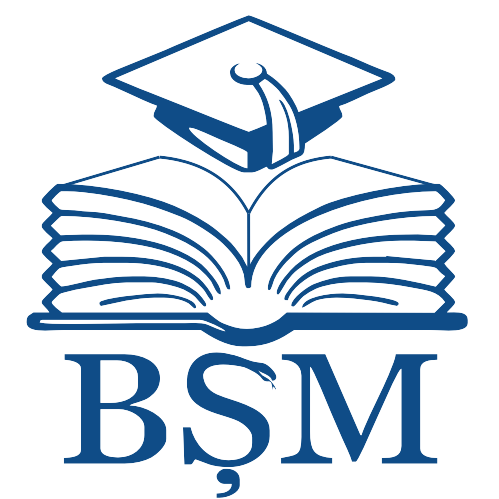|
|
- IRMS - Nicolae Testemitanu SUMPh
- 1. COLECȚIA INSTITUȚIONALĂ
- MATERIALE ALE CONFERINȚELOR ȘTIINȚIFICE
- „Cells and tissues transplantation. Actualities and perspectives. The 3rd edition” dedicated to the 80th anniversary of the founding of Nicolae Testemitanu State University of Medicine and Pharmacy. Chisinau, March 21-22, 2025
- The Materials of the National Scientific Conference with International Participation „Cells and tissues transplantation. Actualities and perspectives. The 3rd edition” dedicated to the 80th anniversary of the founding of Nicolae Testemitanu State University of Medicine and Pharmacy. Chisinau, March 21-22, 2025: [Abstracts]
Please use this identifier to cite or link to this item:
http://hdl.handle.net/20.500.12710/30503
| Title: | Scalenus syndrome |
| Authors: | Neznaico, Victoria
Istrati, Nina |
| Keywords: | compression;pain;scalene triangle;scalene muscles;cervical rib |
| Issue Date: | 2025 |
| Publisher: | CEP Medicina |
| Citation: | NEZNAICO, Victoria and Nina ISTRATI. Scalenus syndrome. In: Cells and tissues transplantation. Actualities and perspectives. The 3rd edition : The Materials of the National Scientific Conference with international participation dedicated to the 80th anniversary of the founding of Nicolae Testemitanu State University of Medicine and Pharmacy. Chisinau, March 21-22, 2025: [abstracts]. Chişinău: CEP Medicina, 2025, p. 93. ISBN 978-9975-82-413-2. |
| Abstract: | Introduction. Scalenus Syndrome is a clinical entity characterized by symptoms resulting from the
compression of the subclavian vessels and branches of the brachial plexus in the scalene triangle. The
syndrome takes its name from the muscles between which the compression occurs. Most cases are
located unilaterally, on the right side. It occurs predominantly in women.
Materials and methods: In carrying out the study, various bibliographical sources and online medical
databases, such as NCBI, PubMed, HINARI and Science Direct, were consulted and analyzed.
Results. In Scalenus Syndrome, among the most common causes are: congenital anomalies,
osteochondrosis, hypertrophy of the anterior scalene muscle, hyperextension of the neck, repetitive
stress injuries, trauma and high-performance sports (tennis, basketball, swimming). The clinical picture
includes paresthesias of the upper extremities and neck, shoulder and/or arm pain, occipital headache
(in neurogenic involvement), paleness, cyanosis, hypothermia and numbness, edema (in vascular
involvement). Doctors should consider this pathology in the differential diagnosis of shoulder and
upper extremity pain, so that patients are appropriately guided for timely therapeutic interventions.
Roots, Adson, Whright, Elevated Arm Stress tests are often used to detect this syndrome, which have
a specificity of 70-100%. Besides these tests, electrophysiological and imaging studies can provide
useful information for the diagnosis. Treatment is prescribed depending on the ethiology. FIrst-line
therapy for Scalenus Syndrome is a conservative treatment, and may include non-steroidal antiinflammatory drugs in combination with sedatives and botulinum toxin injections. Patients who have
failed conservative therapy are considered for surgical treatment: scalenotomy, resection of the first
rib.
Conclusion. In our study, we have highlighted that Scalenus Syndrome involves theccompression of
nerves and vessels in the scalene triangle, leading to various clinical manifestations. It is a complex
clinical syndrome, with anatomical variations and multifactorial mechanisms contributing to the
development of symptoms. Diagnosis involves patients history, clinical exam, functional tests and
imaging studies. The treatment ranges from non-drug therapy to surgical decompression, the treatment
of choice being the use of minimally invasive treatment. |
| metadata.dc.relation.ispartof: | Cells and tissues transplantation. Actualities and perspectives. The 3-rd edition. Chisinau, March 21-22, 2025 |
| URI: | https://repository.usmf.md/handle/20.500.12710/30503 |
| ISBN: | 978-9975-82-413-2 |
| Appears in Collections: | The Materials of the National Scientific Conference with International Participation „Cells and tissues transplantation. Actualities and perspectives. The 3rd edition” dedicated to the 80th anniversary of the founding of Nicolae Testemitanu State University of Medicine and Pharmacy. Chisinau, March 21-22, 2025: [Abstracts]
|
Items in DSpace are protected by copyright, with all rights reserved, unless otherwise indicated.
|


